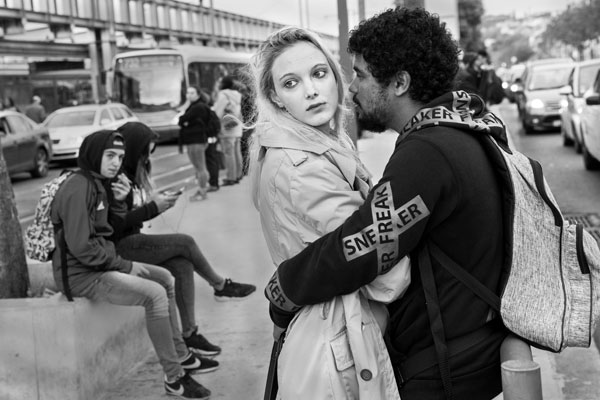Rumored Buzz on Framing Streets
Wiki Article
Some Known Details About Framing Streets
Table of ContentsFacts About Framing Streets RevealedIndicators on Framing Streets You Should KnowAbout Framing StreetsRumored Buzz on Framing StreetsFascination About Framing Streets9 Easy Facts About Framing Streets Described
, usually with the purpose of catching pictures at a definitive or touching moment by cautious framing and timing. https://www.goodreads.com/user/show/174116073-david-turley.
Facts About Framing Streets Revealed
Susan Sontag, 1977 Street photography can focus on individuals and their actions in public. In this respect, the road digital photographer is comparable to social documentary photographers or photographers that also work in public areas, yet with the aim of recording newsworthy events. Any one of these photographers' pictures might catch individuals and residential property visible within or from public areas, which often entails navigating honest concerns and laws of personal privacy, safety and security, and home.Representations of daily public life develop a category in practically every period of world art, starting in the pre-historic, Sumerian, Egyptian and very early Buddhist art durations. Art managing the life of the street, whether within sights of cityscapes, or as the dominant concept, shows up in the West in the canon of the Northern Renaissance, Baroque, Rococo, of Romanticism, Realistic look, Impressionism and Post-Impressionism.
Get This Report on Framing Streets
Louis Daguerre: "Blvd du Holy place" (1838 or 1839) In 1838 or 1839 the very first photo of numbers in the street was recorded by Louis-Jacques-Mand Daguerre in one of a pair of daguerreotype sights drawn from his workshop home window of the Boulevard du Holy place in Paris. The second, made at the height of the day, shows an uninhabited stretch of street, while the other was taken at about 8:00 am, and as Beaumont Newhall reports, "The Boulevard, so frequently full of a moving crowd of pedestrians and carriages was completely singular, except an individual who was having his boots brushed.His boots and legs were well defined, but he is without body or head, since these were in activity." Charles Ngre, waterseller Charles Ngre. https://businesslistingplus.com/profile/framingstreets1/ was the first photographer to acquire the technological refinement called for to register people in activity on the street in Paris in 1851. Photographer John Thomson, a Scotsman functioning with journalist and social protestor Adolphe Smith, released Street Life in London in twelve month-to-month installations starting in February 1877
Framing Streets Fundamentals Explained
Eugene Atget is considered as a progenitor, not because he was the first of his kind, but as an outcome of the popularisation in the late 1920s of his record of Parisian roads by Berenice Abbott, that was inspired to undertake a similar documents of New York City. [] As the city created, Atget aided to advertise Parisian roads as a worthwhile subject for photography.
Some Ideas on Framing Streets You Need To Know
Martin is the initial recorded digital photographer to do so in London with a disguised cam. Mass-Observation was a social study organisation established in 1937 which intended to videotape day-to-day life in Britain and to tape the responses of the 'man-in-the-street' to King Edward VIII's abdication in 1936 to marry divorce Wallis Simpson, and the succession of George VI. Between 1946 and 1957 Le Groupe des XV annually showed work navigate here of this kind. Andre Kertesz. Circus, Budapest, 19 May 1920 Road digital photography developed the major content of two exhibits at the Gallery of Modern Art (Mo, MA) in New York curated by Edward Steichen, 5 French Digital Photographers: Brassai; Cartier-Bresson, Doisneau, Ronis, Izis in 1951 to 1952, and Post-war European Photography in 1953, which exported the concept of street photography worldwide.
The 10-Second Trick For Framing Streets
The recording machine was 'a hidden camera', a 35 mm Contax concealed beneath his coat, that was 'strapped to the chest and connected to a long cable strung down the ideal sleeve'. His job had little contemporary effect as due to Evans' sensitivities regarding the creativity of his project and the personal privacy of his topics, it was not published until 1966, in the publication Numerous Are Called, with an introduction composed by James Agee in 1940.Helen Levitt, after that an educator of children, connected with Evans in 193839. She recorded the transitory chalk drawings - Street photography that were part of youngsters's street culture in New york city at the time, along with the kids who made them. In July 1939, Mo, MA's new photography area included Levitt's operate in its inaugural exhibitRobert Frank's 1958 publication,, was significant; raw and frequently indistinct, Frank's photos examined mainstream digital photography of the moment, "tested all the formal guidelines put down by Henri Cartier-Bresson and Pedestrian Evans" and "contradicted the wholesome pictorialism and genuine photojournalism of American magazines like LIFE and Time".
Report this wiki page